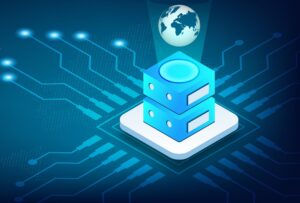
Grafana Labs, best known for its open-source visualization dashboards, unveiled several product updates at its annual conference – GrafanaCon. This year’s event was held in Amsterdam and was the first in-person GrafanaCon in the last five years.
Founded in 2014 as a side project to make a more friendly dashboarding tool for time series metrics, Grafana Labs has grown exponentially to now have multiple projects and over 20 million users. Some of its major customers include Salesforce, Bloomberg, Dell Technologies, and Citigroup.
The 11.0 release of Grafana, the company’s flagship open-source data visualization platform, was announced during the keynote address. With the new release, it is now easier and faster to connect users’ data, share and edit dashboards, and respond to incidents. The platform also offers more options for data visualization.
The company is now offering an Explore Metric module that can identify an issue’s root cause without needing to launch a query against the open-source Prometheus which is the core of the Grafana Cloud observability platform.
Grafana Labs also introduced Explore Logs, which provides a query-less experience for browsing Loki logs. Users don’t have to rely on LogQL to navigate and filter logs. The new Grafana App now extends the core API to provide stronger integrations. Users can integrate with Tempo and Traces for greater visibility of profiles within a trace span.
 The Grafana 11.0 will be generally available on May 14th. It is currently available for public preview and is rolling out to Grafana Cloud Users.
The Grafana 11.0 will be generally available on May 14th. It is currently available for public preview and is rolling out to Grafana Cloud Users.
“Our goal is to make it easier and faster to get started for anyone – whether they’re landing on the moon or monitoring their daily commute – to get started with observability, and today’s announcements at GrafanaCON are another big step in that direction,” said Tom Wilkie, CTO of Grafana Labs.
Wilkie further added, “Grafana users can build a fully composable observability stack with Loki as the data backend and Alloy as the data pipeline, which then brings that data into Grafana to visualize. This interoperable open source stack will help users achieve new levels of efficiency and insight.”
A new version of Loki, the company’s popular logging project, was also announced at the event. The Loki platform is based on the Prometheus label-based data model, best suited for developer use cases, but not ideal for non-developers looking to use the platform for common search and indexing. Tasks.
This issue has been resolved with the new Loki 3.0, which features bloom filters to accelerate queries that search for text strings. The platform’s search capabilities are significantly enhanced with this release. With Loki 3.0, users can now ingest, store, and query OpenTelemetry Protocol (OTLP) logs and metadata to solve observability problems.
The 2024 Grafana’s Observability Survey showed that an overwhelming majority of respondents were using Prometheus and OpenTelemetry and that the usage was trending upwards. To support the interoperability of the two projects with each other as well as with Grafana, the company has announced Grafana Alloy.
As a spiritual successor to Grafana Agent, Alloy offers native pipelines for both Prometheus and OpenTelemetry formats including logs, metrics, traces, and profiles. It is a vendor-neutral platform, so Allow is compatible anywhere the OpenTelemetry Collector or Prometheus Agent is used.
Allow is built with over 120 components to collect telemetry data from applications, databases, and OpenTelemetry collectors. One of the key advantages of Grafana Alloy is its flexibility. It can work with different architectures, enabling users to configure Alloy with cloud, on-prem, or hybrid observability solutions.
Related Items
Data Observability in 2024: A Guide
Explosion of Observability Data from Cloud Reaches Tipping Point, Dynatrace Says
Data Observability in the Age of AI: A Guide for Data Engineers



